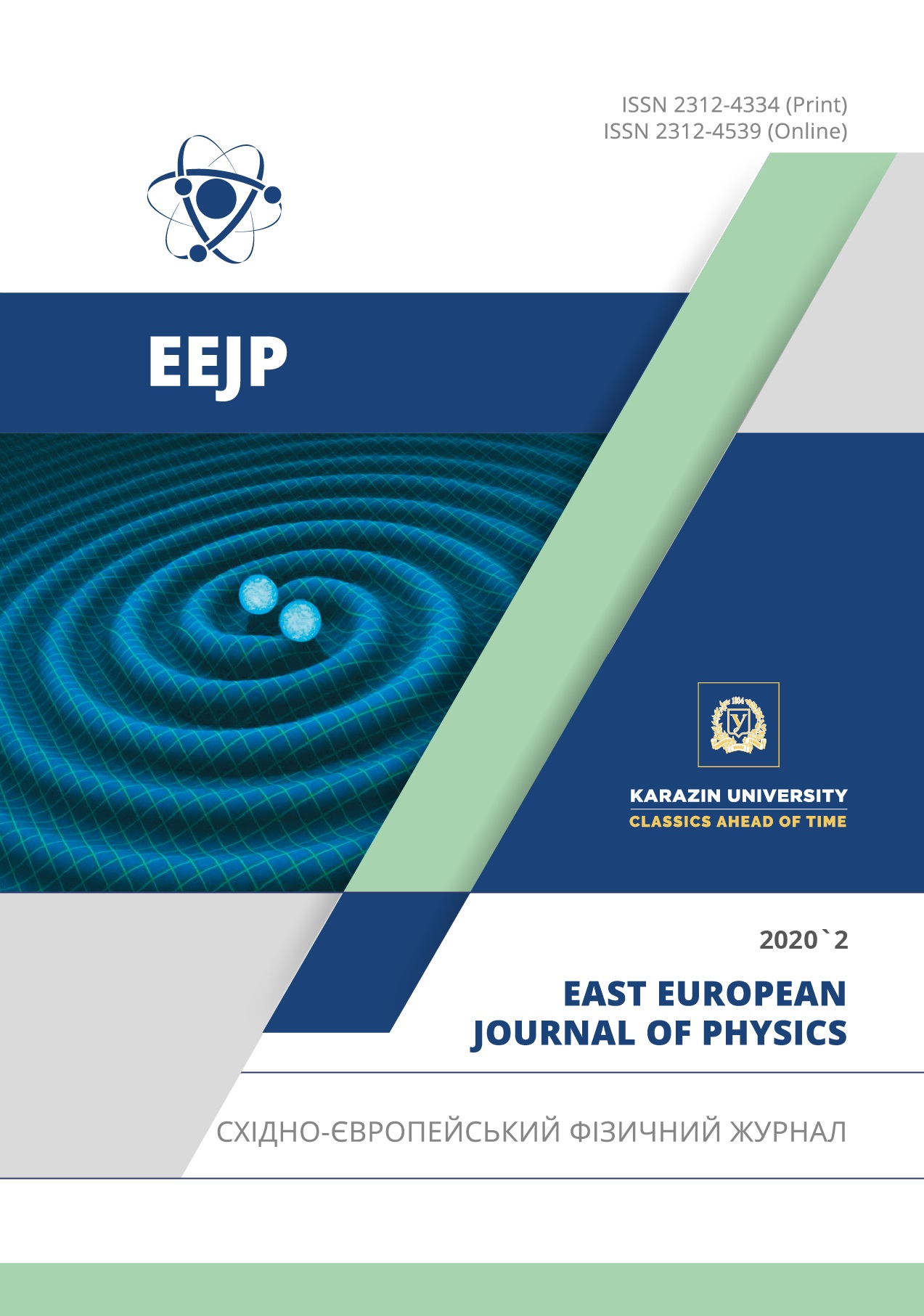On the Periodic Change of the Luminosity of the Cosmic Sources with an Active Medium
Abstract
The presence of an internal layer with an active medium in a hot radiation source is considered, which can be described by a quantum two-level system located near equilibrium. The population of the upper and lower levels is approximately equal. It is shown that during convection from deeper hot layers, which supports the inversion of the populations of the active system, generation of induced radiation pulses is possible, the intensity of which is comparable to or greater than the intensity of the background spontaneous radiation of the source. With a sufficient thickness of the surface layers due to the effects of radiation scattering in them, the emission spectrum of a completely black body may well form there. Pulse generation near a previously detected new threshold of induced radiation can lead to a periodic change in the radiation intensity of the source as a whole. This threshold is determined by the equality of the squared population inversion to the total number of states. The generation of pulses of induced radiation is considered both in Einstein's representation, on the basis of balanced equations, and using a semiclassical description for small values of population inversion and for low levels of electric field intensity, when the Rabi frequency is less than the line width. The description of the induced radiation process is reduced to a one-parameter system of equations. Periodic solutions are represented by closed trajectories on the phase plane (relative density of quanta, relative density of population inversion). A similar layer with an active medium, which can be described by a quantum two-level system located near equilibrium, can exist in stars and is most likely localized in the photosphere. If there is significant convection in the star’s atmosphere, conditions can be realized for generating pulses of induced radiation. It turns out that one can see the similarity of the obtained solutions with known observations of changes in the luminosity of Cepheid stars (Cepheus delta and the North Star).
Downloads
References
А. Einstein, Mitteilungen, D. Phys. Ges. Zürich 18, 47–62 (1916); Phys. Z. 18, 121-128 (1917); UFN 86 (3), 371–411 (1965), https://doi.org/10.3367/UFNr.0086.196507b.0371, in https://ufn.ru/ru/articles/1965/7/b/, (in Russian).
R. Ladenburg, Rev. Mod. Phys. 4, 243-260 (1933); UFN 14 (6), 721–741 (1934), https://doi.org/10.3367/UFNr.0014.193406b.0721, in https://ufn.ru/ru/articles/1934/6/b/, (in Russian)
L.D. Landau, and E.M. Livshits, Electrodynamics of continuous media. (Moscow, GIFLML, 1959), pp. 532, (in Russian).
V.L. Ginzburg, UFN, 140 (4), 687–698 (1983), (in Russian)
Ch.H. Townes, Science, 149 (3686), 831-841 (1965), https://doi.org/10.1126/science.149.3686.831; UFN. 88 (3), 461–483 (1966), (in Russian).
A.G. Zagorodny, and V.M. Kuklin, in: High-power pulsed electrophysics. International conference XIV Khariton’s topical scientific readings. Digest of technical papers (Sarov, 2013), pp. 38-43, (in Russian)
A.V. Kirichok, V.M. Kuklin, A.V. Mischin, A.V. Pryjmak, and A.G. Zagorodny, VANT. Ser.: Plasma Electronics and New Methods of Acceleration, 4 (77), 267-271 (2013).
S.B. Pickelner, Atmospheres of stars, (Physics of Space, 1986), http://www.astronet.ru/db/msg/1179555, (in Russian)
C.L. Statz, and G. DeMars, Quantum Electronics, (N.Y., Columbia Univ. Press, 1960), pp. 530.
A.V. Kirichok, V.M. Kuklin, and A.G. Zagorodny, VANT. Ser.: Plasma Electronics and New Methods of Acceleration, 4 (80), 9-11 (2015), https://arxiv.org/pdf/1610.04628v1.
P.S. Landa, Self-oscillations in distributed systems, (Moscow, Nauka, 1983), pp. 320, in Russian
A.S. Davydov, Quantum mechanics, (Fizmatgiz, Moscow, 1963), pp. 748, in Russian
L. Allen, J. Eberly, Optical resonance and two-level atoms. (New York, Wiley‐Interscience, 1975), pp. 222.
A.S. Rastorguev, Lectures on Galactic Astronomy, in http://www.astronet.ru/db/msg/1228262, in Russian
J. Kaler, Stars and stars of the week, (University of Illinois), in http://stars.astro.illinois.edu/sow/deltacep.html
J. Kaler, Stars and stars of the week, (University of Illinois), in http://stars.astro.illinois.edu/sow/polaris.html
N.N. Samus, and O.V. Durlevich, GCVS - General Catalog of Variable Stars, (Institute of Astronomy of Russian Academy of Sciences, Sternberg State Astronomical Institute of the Moscow State University), in: http://heasarc.gsfc.nasa.gov/W3Browse/all/gcvs.html.
Copyright (c) 2020 Vitaly V. Kostenko, Volodymyr M. Kuklin, Eugen V. Poklonskiy

This work is licensed under a Creative Commons Attribution 4.0 International License.
Authors who publish with this journal agree to the following terms:
- Authors retain copyright and grant the journal right of first publication with the work simultaneously licensed under a Creative Commons Attribution License that allows others to share the work with an acknowledgment of the work's authorship and initial publication in this journal.
- Authors are able to enter into separate, additional contractual arrangements for the non-exclusive distribution of the journal's published version of the work (e.g., post it to an institutional repository or publish it in a book), with an acknowledgment of its initial publication in this journal.
- Authors are permitted and encouraged to post their work online (e.g., in institutional repositories or on their website) prior to and during the submission process, as it can lead to productive exchanges, as well as earlier and greater citation of published work (See The Effect of Open Access).








